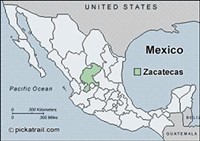Keegan Hamilton visits one of Gut Check's favorite addresses, Cherokee Street, to sample Lenten cuisine.
When St. Louis Archbishop Raymond Burke, paragon of Catholic morality, picks up an issue the RFT, he likely grumbles that is published by a pack of Godless heathens. This is simply not true. We have at least four practicing Catholics in the newsroom.
I, however, am in the heathen camp. While I consider myself spiritual, the closest I get to organized religion is a devoted worship of sports. Thus it was in the wake of the U.S.-Mexico soccer match a few weeks back that I called up a friend who owns the Soccer apparel/equipment store Gooollll on Cherokee Street to discuss the revelation (to me at least) that 18 year-old messiah Jozy Altidore is by far the best soccer player in the United States.
My friend, Minerva Lopez, who also runs the Centro Cultural de Mexico in St. Louis, agreed with me about Jozy and invited me to lunch at her favorite St. Louis Mexican restaurant, La Tortuga at 2817 Cherokee Street, to discuss. Since Ash Wednesday had just passed, Minerva, who was raised Catholic, pointed out that this time of year La Tortuga, like many Hispanic restaurants on Cherokee, features a special Lent menu on Fridays to cater to their large Roman Catholic contingent.
As a heathen, I was intrigued. What exactly is forbidden food by the Catholic church these days? Is it strictly vegetarian? Is fish kosher? I'd heard ungulates, hooved animals, were definitely out, but does that mean chicken is in? And, most importantly, is it as delicious as other Mexican food?
The answers, I now know, are: not much, no, yes, yes, and hell yes.
To quickly recap, lent is the Christian holiday that spans the 40 days leading up to Easter. As I understand it, the tradition of giving things up and fasting arises from some time Jesus spent wandering around the desert, resisting temptation from Satan (see the books of Matthew, Mark, and Luke for the details, or simply read about it here.) The secular take on the practice, is that it arose out of a need to conserve dwindling winter food stocks.
Back in the day, depending on what denomination a person was or what country they were in, the regimen could be pretty intense, going as far as all-day fasting and abstention from all animal products including fish and eggs. The rules were often bent. For example, in a fishy Wikipedia entry on Lent, there's a claim that in Medieval Germany, beaver tail was allowed to pass because it was abundant and kind of looked like a fish. Generally, however, the custom was to fast all day and eat a small meal without meat or alcohol.
These days, people are giving up all kinds of things for lent, ranging from the Facebook, to promiscuous sex, to saying the F-Bomb, as one of the RFT Catholics was doing last I heard. My personal favorite lent story from this year is the Roman Catholic bishops from Mexico City who urged drug traffickers to give up crime during the holy season.
Contemporary Roman Catholic dogma still stands pretty firm on the foodstuffs however: Catholics between the ages of 18 and 59 are obliged to fast on Ash Wednesday and Good Friday. All Catholics 14 years old and older must abstain from meat on Ash Wednesday, Good Friday and all the Fridays of Lent.
A 2004 poll found that nearly one-third of Catholics in the US are Hispanic. That means that until Easter Sunday, a whole lot of folks visiting restaurants like La Tortuga are on a cuaresma diet and won't be ordering carne with their dinners.
On our visit, Minerva, who is close friends with the chefs and owners of La Tortuga, sisters Alicia Herrejon and Maricela Rosas, simply strolled into the open kitchen, which is separated from the small restaurant by the register, and asked for "lent food."
While we waited, she explained that traditional Mexican lent cuisine depends on the region of origin. If you're close to the sea, expect lots of seafood. More inland states favor chiles, beans, dairy products, and freshwater fish. (The ladies of La Tortuga were born in the US but spent most of their childhood in the state of Zacatecas, which is the center of northern Mexico.)
The most traditional lent dinner, she said is sopa y guisado or soup and sauté. The guisado, we had consisted of sautéed peppers and onions topped with a chunky, white ricotta-style cheese. It had the look and texture of steamed green beans, but the flavor had a considerable spicy kick.
For soup, we were treated to Caldo de Camarones (Literally translated: shrimp broth.) The soup was a reddish shade of brown, almost like a lobster bisque, but not as thick. A large white hunk of catfish- cartilage, bones and all- floated in the middle. I had to hunt for the shrimp, which were a mix of large unpeeled prawns and smaller peeled shrimp, at the bottom of the bowl. The broth, I was told, came from a homemade shrimp bouillon. The soup had strong cilantro flavor that competed with the all the pungent seafood. It was very spicy. One of the main seasonings, I was told, is Chile de Arboles, a dried red chile that is a relative of cayenne pepper. We sopped up the broth with plain, white torta bread.
We were also brought a breaded and fried catfish filet, listed on the menu simply as "filete." Plain, the fish had little to offer, but topped with the house salsa verde (lots of cilantro, lots of white onions), and fresh slices of avocado, it was tasty.
Minerva described other lent dishes, which are not available at La Tortuga. She said her favorite is Charales Capeados, tiny fish individually covered in egg batter and fried. Most lent soups, she added, are lentil or fava bean. Chile rellenos, cheese-stuffed and fried or baked chiles, which La Tortuga does serve, are also a favorite.
For dessert, the chefs brought out a tray of Capirotada, a traditional lent dessert. The postre is made by battering slices bread in egg whites, frying them golden brown, then baking and soaking them in a bath of mulled syrup, milk, spices, peanuts, and candied fruits. The batch that we had came from a container stacked with two layers of slices, the bottom still soaking in half an inch of milk, syrup, and spices. It was covered with rainbow sprinkles. Ingredients for the dish vary widely, some including plantains, almonds, and even a topping of cheddar cheese.
I preferred the top layer of the Capirotada, which still had a somewhat crisp shell from the fried batter, as opposed to the mushy bottom. This was Minerva's favorite part of the meal, and she emailed me the following Monday to say she'd made a batch herself that weekend because she was "really craving the way it was made at home."
Minerva, like me, is not a practicing Catholic, but she mentioned that the largest Mexican Roman Catholic congregation in St. Louis is at St. Cecilia, just off South Grand. (See correction below.) Myself, I'm partial to my Catedral, the emerald-domed Cathedral Basilica, which I can see from my bedroom window. Its bells clang unrelentingly on Sunday mornings when I'm hungover.
(Full disclosure: I was not an escritor incognito at the restaurant. The señoras in the kitchen were aware that their friend Minerva had brought a reporter. I paid a flat rate for all the food. I have no idea how much each dish costs.)
EDIT: The original version of this post stated that St. Pius V on South Grand has the largest Mexican Roman Catholic congregation in St. Louis. In fact, St. Cecilia, also on South Grand, has the largest such congregation. The post has been rewritten to this effect.









